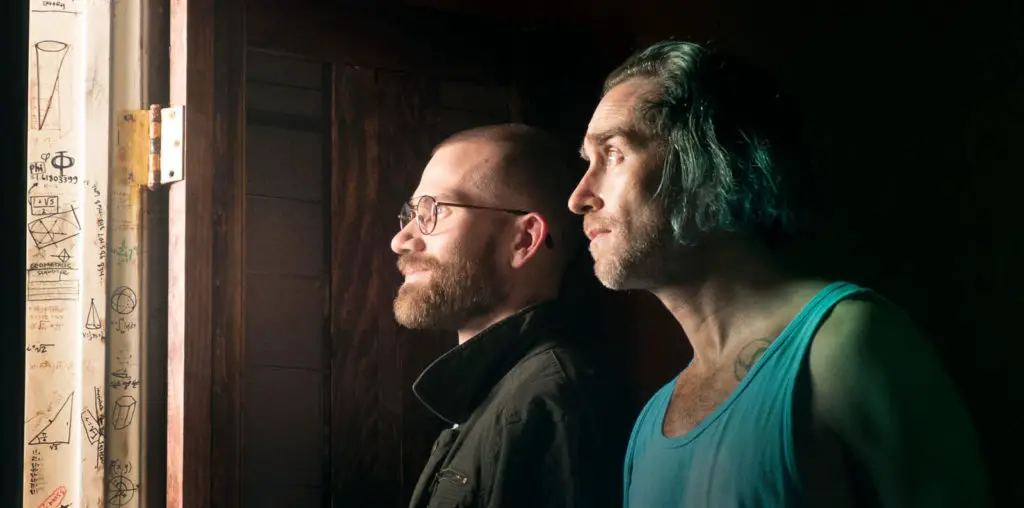
Filmmaker Sean Christensen invites us into his memories as he feeds us bits and pieces of his parents’ divorce and his father’s departure from the family-home. He accomplishes this through voice-over narration, the tick-tock of a clock, doors clicking shut and a series of soft-focus still photographs. The last 45 seconds of the film offer a blurred home movie showing his mother, sister and Christensen when they are very young. We hear his mother speaking and the childish voices in the background. This portion of the film primarily focuses upon the filmmaker as a small child riding a tricycle. We hear him speak inaudibly while his mother converses with him—questioning the boy as if conducting an interview.
While the film’s concept is interesting, its consistent somberness accented by monotonous voice-over and lengthy black-screen transitions, becomes claustrophobic and exhausting. The film is timed at 3 minutes —2 minutes shy of that indicated on Christensen’s Imdb title page. Whatever this short film’s correct duration, it feels longer than it should.
Creating a successful documentary is possibly the toughest challenge a filmmaker can undertake. Even personal documentaries such as, Empty House, must somehow balance objective factual reportage, image and sound in such a way that the film retains viewer-interest. For this attempt alone, we must applaud Sean Christensen.
The greatest problems with the film are cinematic choices of image selection and the manner in which these stills are photographed. For example, when the narrator states that the father takes the mattress from the marital bed, there is no need to photograph the bed-frame for such a lengthy duration. It also doesn’t help matters that the structure is filmed dead center in the middle of the room, making it all the more static and uninteresting. Similar simplistic shots portray tables, chairs, clocks, runaway cat, Sophie and an image of Bette Midler. These images are all shown seconds after the narrator mentions them, leaving nothing to the viewer’s imagination. There are also too many stills shown in conjunction with too few motion pictures. This makes the project seem more a gallery installation than a documentary film. There is also only one photograph of the father and no home movie footage of the man. This is problematic in that the father is a principal subject of interest and the very reason for the empty house. While downplaying the father may be Christensen’s cinematic choice, this is inconsistent with his narration where he dwells upon his father in every conceivable way. How interesting it would be to see such images of the father in conjunction with the teenage Christensen (his age when the father leaves) and the filmmaker as an older man. In this way we could see and imagine the father’s impact on the filmmaker and his work.
Why one chooses to make a documentary is always a source of fascination. Who is the filmmaker and what is his true agenda? Perhaps the greatest intensity of “Empty House” is in those last 45 seconds of home movie footage. Here, the camera is suddenly turned on the filmmaker, interviewed by his ever-probing mother. Interestingly, Christensen shows himself in blurred images of a child, whose distant voice is barely detectable. In the end, most filmmakers choose that hidden space for themselves, and there they attain utmost strength.
